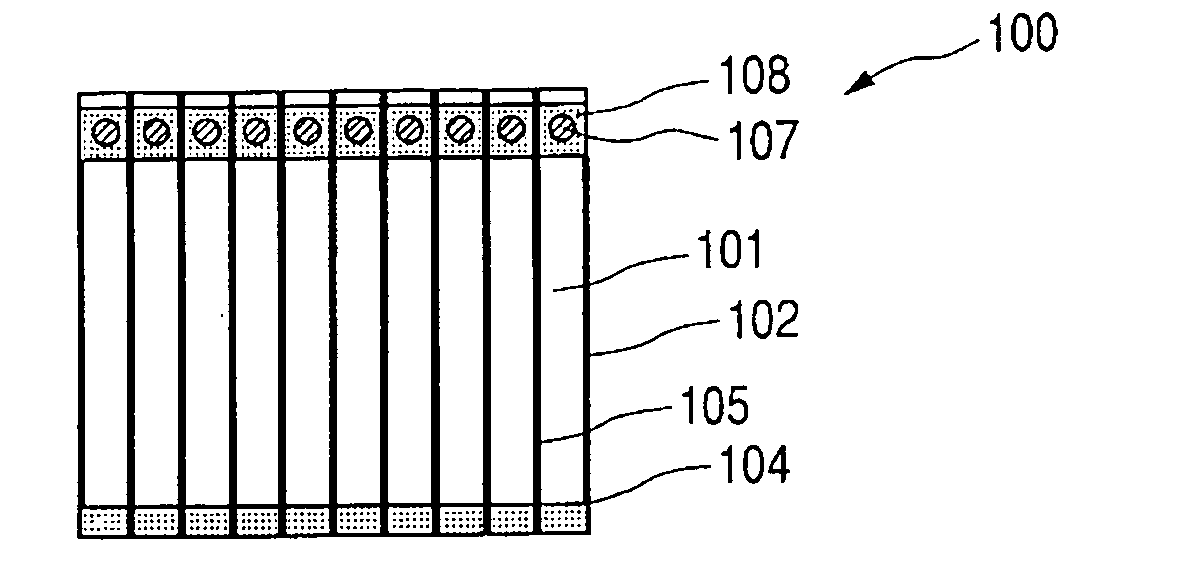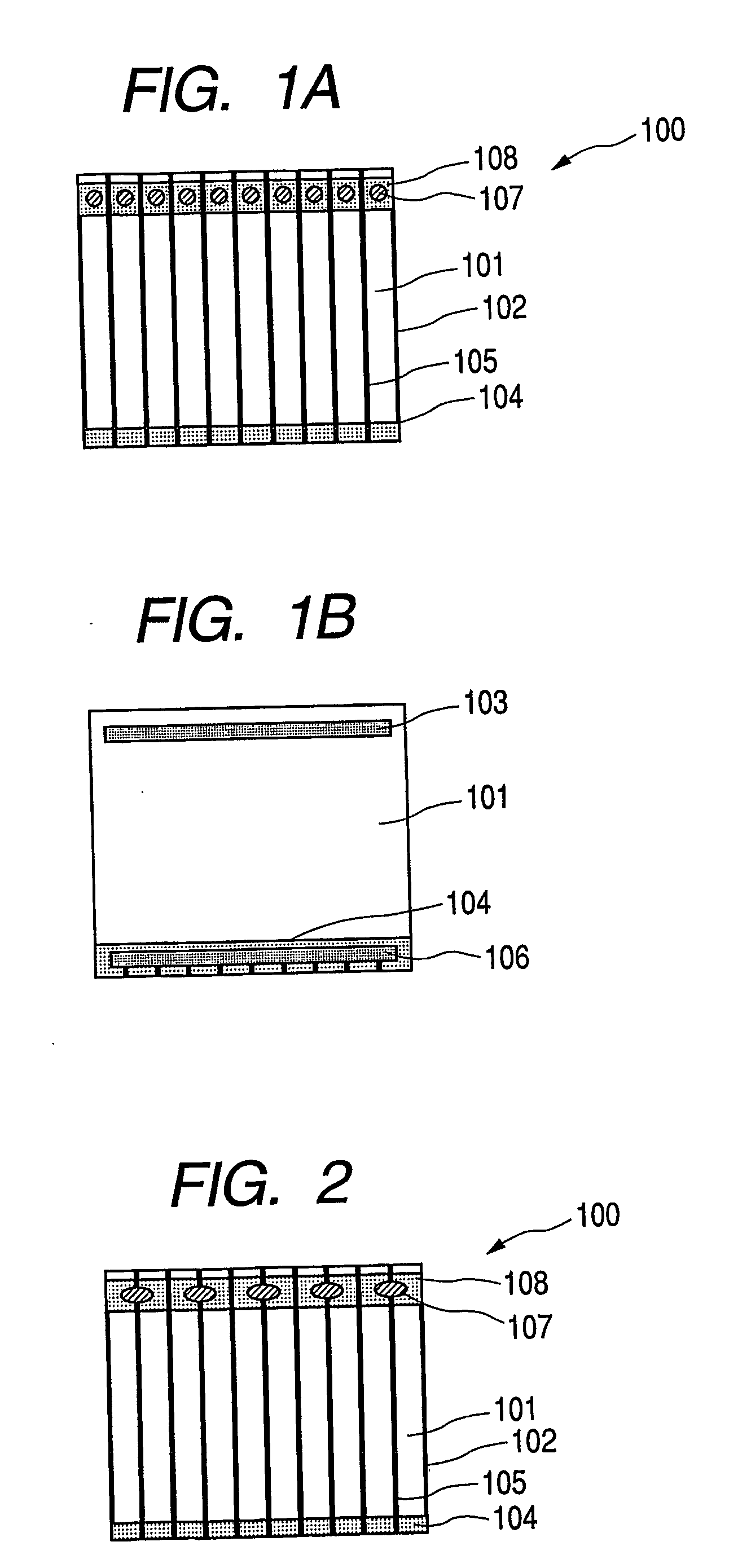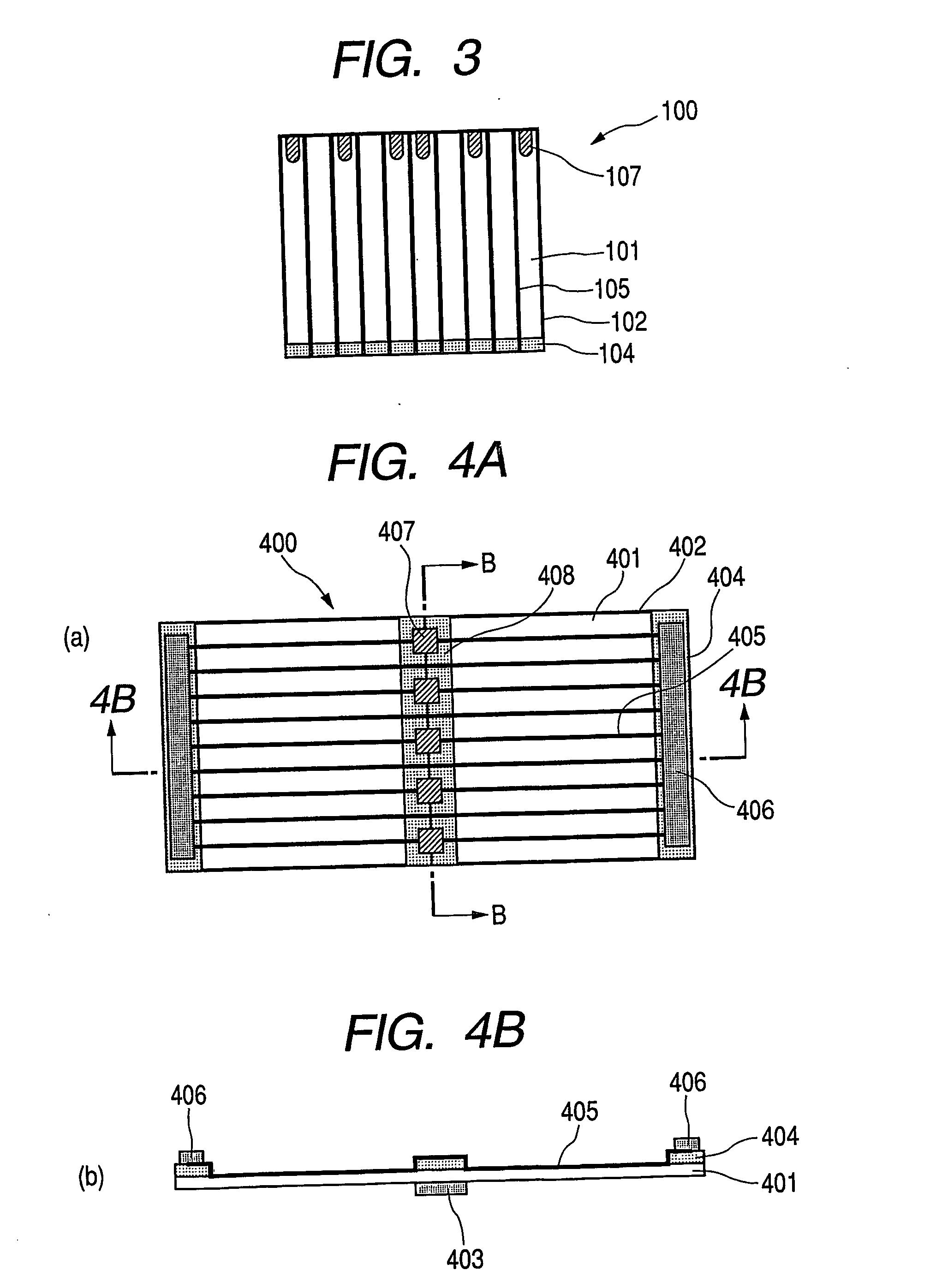Photovoltaic element and method of producing photovoltaic element
a photovoltaic element and photovoltaic element technology, applied in the field of photovoltaic elements, can solve the problems of increasing resistance loss with the increasing length of the current-collecting electrode, the inability to fill the light-receiving surface of the photovoltaic element module, and the inability to effectively utilize the light-receiving surface area, etc., to achieve the effect of facilitating series connection, facilitating reliability of the photovoltaic element, and enhancing the degree of freedom
- Summary
- Abstract
- Description
- Claims
- Application Information
AI Technical Summary
Benefits of technology
Problems solved by technology
Method used
Image
Examples
example 1
[0079]FIGS. 1A and 1B are schematic views for explaining a photovoltaic element according to Example 1 of the present invention. FIG. 1A is a schematic view of a photovoltaic element provided with current-collecting electrodes using metal wires viewed from a light-receiving surface side, and FIG. 1B is a schematic view as viewed from a non-light-receiving surface side.
[0080] In FIGS. 1A and 1B, 101 denotes a photovoltaic element plate of 200 mm×250 mm, which has three layers of a lower electrode layer, an amorphous silicon layer having a photovoltaic function and a transparent electrode layer provided on a substrate.
[0081] The photovoltaic element plate 101 is formed by sequentially depositing Al and ZnO in a thickness of several hundred nanometers respectively by sputtering right on a stainless steel sheet (substrate) having a thickness of 150 μm for supporting the whole photovoltaic element plate to thereby form a Lower electrode layer; further, sequentially depositing n-type, i...
example 2
[0093]FIG. 4A to FIG. 6 are schematic views for explaining a photovoltaic element according to Example 2 of the present invention. FIG. 4A is a schematic view of the photovoltaic element viewed from a light-receiving surface side; FIG. 4B is a schematic sectional view of taken along line 4B-4B in FIG. 4A; FIG. 5A is a schematic view showing photovoltaic elements obtained by dividing the photovoltaic element of FIG. 4A along line 4B-4B in FIG. 4A; and FIG. 5B is a schematic sectional view taken along line 5B-5B in FIG. 5A.
[0094] Example 2 is directed to a photovoltaic element used in a photovoltaic generation system and differs from Example 1 in that two photovoltaic elements are previously made in one photovoltaic element, which is then divided into two to produce the photovoltaic elements, and in the shape of island-shaped transparent-electrode-layer-removed-portions.
[0095] In FIGS. 4A and 4B, 401 denotes, similarly to Example 1, a photovoltaic element plate of 200 mm×500 mm, whi...
PUM
| Property | Measurement | Unit |
|---|---|---|
| size | aaaaa | aaaaa |
| light transmittance | aaaaa | aaaaa |
| thickness | aaaaa | aaaaa |
Abstract
Description
Claims
Application Information
 Login to View More
Login to View More - R&D
- Intellectual Property
- Life Sciences
- Materials
- Tech Scout
- Unparalleled Data Quality
- Higher Quality Content
- 60% Fewer Hallucinations
Browse by: Latest US Patents, China's latest patents, Technical Efficacy Thesaurus, Application Domain, Technology Topic, Popular Technical Reports.
© 2025 PatSnap. All rights reserved.Legal|Privacy policy|Modern Slavery Act Transparency Statement|Sitemap|About US| Contact US: help@patsnap.com



